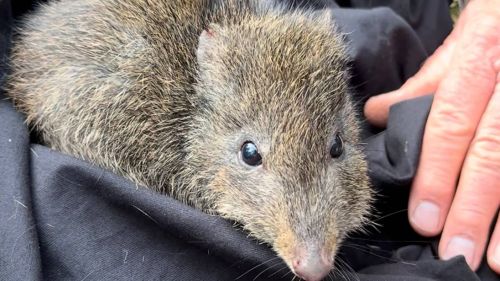A new Edith Cowan University (ECU) study has provided further evidence that men who frequently stare at women's bodies, rather than their faces, are more likely to harbour harmful attitudes and show tendencies that may lead to sexual assault.
The study by ECU psychology researcher Dr Ross Hollett examined pervasive body gaze associations with explicit, implicit, and physiological sexual assault propensity measures.
"The most significant finding is that pervasive body gaze behaviour in heterosexual men towards women is strongly correlated with various markers of sexual assault propensity," Dr Hollett said.
"Specifically, pervasive body gaze is linked with rape myth acceptance attitudes, prior perpetration of sexual assault, stronger implicit associations between erotica and aggression, and lower physiological emotional responses to images of partially dressed injured women," he said.
"This indicates that men who frequently engage in body gaze are more likely to hold insidious attitudes and exhibit behaviours that facilitate sexual assault and are potentially desensitised to victimised women."
Excessive body gaze shown to be reliable marker
This study builds on previous research by further validating the 'pervasive body gaze scale', a self-report research method developed by Dr Hollett in 2022, which has been verified through the use of eye tracking technology to measure gaze patterns.
"The previous study established correlations between body gaze behaviour and victim-blaming attitudes," Dr Hollett said.
"The current study extends these findings by demonstrating that pervasive body gaze also correlates with implicit and psychological measures related to sexual assault, as well as the actual perpetration of sexual assault, providing stronger evidence of the validity of the body gaze scale as a marker of sexual objectification and assault propensity."
Implications for the research
Dr Hollett said understanding the attitudes and behaviours that precede or accompany sexual assault is crucial for predicting and reducing the likelihood of offending.
"Because pervasive body gaze is a readily observable social behaviour, these new insights offer valuable guidance for detecting deviant sexual objectification attitudes," he said.
"This could be instrumental in developing risk assessments, estimating intervention efficacy, and enhancing public awareness about sexual assault and objectification."
Future research
Dr Hollett said the next steps for the research involve implementing the pervasive body gaze scale in applied settings, such as prevention or intervention programs for university students or sex offenders.
"Longitudinal studies could track changes in body gaze behaviour and its correlation with sexual assault-related outcomes over time," he said.
"Additionally, developing gaze intervention tasks to deliberately disrupt body gaze towards women and encourage face gaze behaviour could be beneficial. This could involve developing brief computerised attention tasks that aim to reduce cognitive and attentional biases towards women's bodies."
The paper 'Evidence that pervasive body gaze behaviour in heterosexual men is a social marker for implicit, physiological, and explicit sexual assault propensities' was published in the journal Archives of Sexual Behaviour.

 A new ECU study has examined pervasive body gaze associations with explicit, implicit, and physiological sexual assault propensity measures.
A new ECU study has examined pervasive body gaze associations with explicit, implicit, and physiological sexual assault propensity measures.



